Banking from your phone?
Download our app
Welcome Back
You can access your accounts here.

Banking from your phone?
Scan the code to download our app.

not featured
2021-07-21
Savings & Budgeting
archived
4 Steps to Complete a Mid-Year Financial Checkup


-
The past couple of years have been financially difficult for many people due to the COVID-19 pandemic and its impacts. But for some, things may be looking up. As the unemployment rate decreases and businesses reopen, life may be feeling more normal again. And it means it’s a great time for you to give yourself a mid-year financial checkup.
A mid-year financial checkup is exactly what it sounds like. Now that 2021 is half over, you should take a close look at your finances to see how you’ve progressed throughout the year so far. Look at your goals and figure out what you’d like to change as we head into the second half of the year. Also, start thinking about your plans for 2022, and what actions you can take now to help you get there.
Here are four suggestions for your mid-year financial checkup.
1. Review Your Budget
Many Americans have a budget. According to a Debt.com annual survey, more people are budgeting than ever before. But if you made your budget at the beginning of 2021 as one of your financial resolutions, there’s a good chance your budgetary needs may have changed.
Whether you’re in the U.S. or overseas, life may look quite a lot different than it did back in January. Depending on your personal situation, someone in your family may have been facing unemployment or another type of employment change. For example, a non-military spouse may have been working from home even if they remained employed full time. Now, they may be back in the office on a daily basis.
And that type of work situation isn’t likely to be the only thing that changed from a financial standpoint. The ways you’re spending -- or plan to spend -- your money are probably different than they were six months ago.
For example, you may not have been able to plan any vacations for the past year or more. Now, parts of the U.S. and the world are re-opening to visitors. That means you’ll need to add potential travel to your budget.
2. Consider Your Retirement Contributions
When times are tougher financially, it’s not always easy to think about saving for the future. It often feels more important to focus on paying daily living expenses, which is understandable. But if you’re reaching a point where you feel more financially secure than you did six months ago, be sure to consider your retirement savings.
Each year, you’re eligible to contribute a certain amount of money into your accounts. If you aren’t maximizing your contributions, you may not be helping your money reach its full potential. Remember -- the earlier you contribute, the more time your money has to grow.
Different types of retirement accounts have different contribution limits. You can contribute a total of $6,000 per year to any IRA accounts you hold, or $7,000 per year if you’re age 50 or older. For regular Thrift Saving Plan or 401(k) contributions, your annual contribution limit is $19,500. Plus, if you contribute into a TSP, the government will match your contribution up to 5% of your basic pay.
Learn more about retirement account contribution limits.
3. Assess Your Emergency Fund
The unpredictable nature of the past couple of years has only proven the importance of having a financial safety net in the form of an emergency fund. Or, a “peace of mind” account, as we like to call it.
What if you haven’t started an emergency fund? Or you haven’t been contributing to it regularly. Don’t panic -- that’s okay. No contribution to your emergency fund is too small, and it’s never too late to get started. And if you haven’t started yet, go ahead and start today.
That’s the great thing about looking at your emergency fund now, during your mid-year financial checkup instead of waiting until the beginning of 2022 -- anything you start contributing today can only help you get ahead in the future.
4. Create a Plan for Your Debt
According to NBC News, members of the armed forces could carry higher credit card debt than civilians. This can be due to unique circumstances for service members, such as frequent relocation and deployment, which often causes additional financial strain.
When you sat down to set some financial goals at the beginning of the year, you may have made a plan to tackle debt. Now’s the time to take a close look at your progress. Compare the amount of debt you started with in January to how much debt you have now.
Think about the method for debt repayment you chose -- the snowball method or the avalanche method. How is that method working for you? Is there anything you would like to do differently in the second half of the year? Consider consolidating your debt* to simplify your planning.
Whether you’ve made as much progress as you were hoping for or not, periodically taking a look at your debt management strategy can be useful. It can either provide you with continued confidence if your strategy is paying off. Or it can give you the motivation you need to keep working at it.
Armed Forces Bank Is Your Partner in Financial Health
Though 2020 and 2021 haven’t been easy, Armed Forces Bank wants you to know that we’re by your side through it all. We’re committed to helping our clients on their journey to financial health.
Member FDIC
*Subject to credit approval.